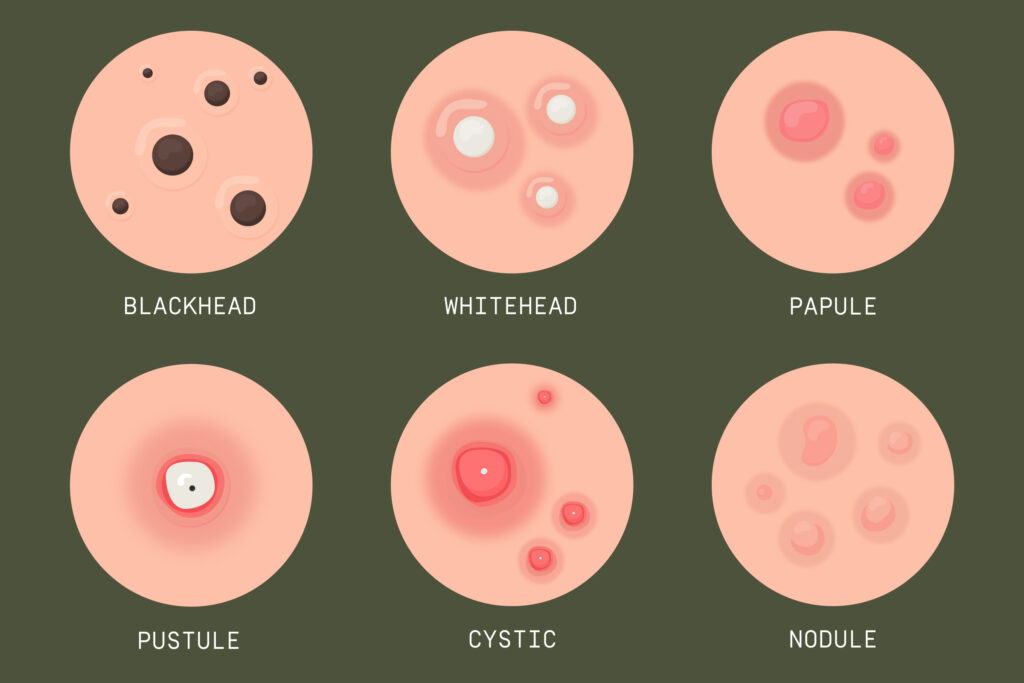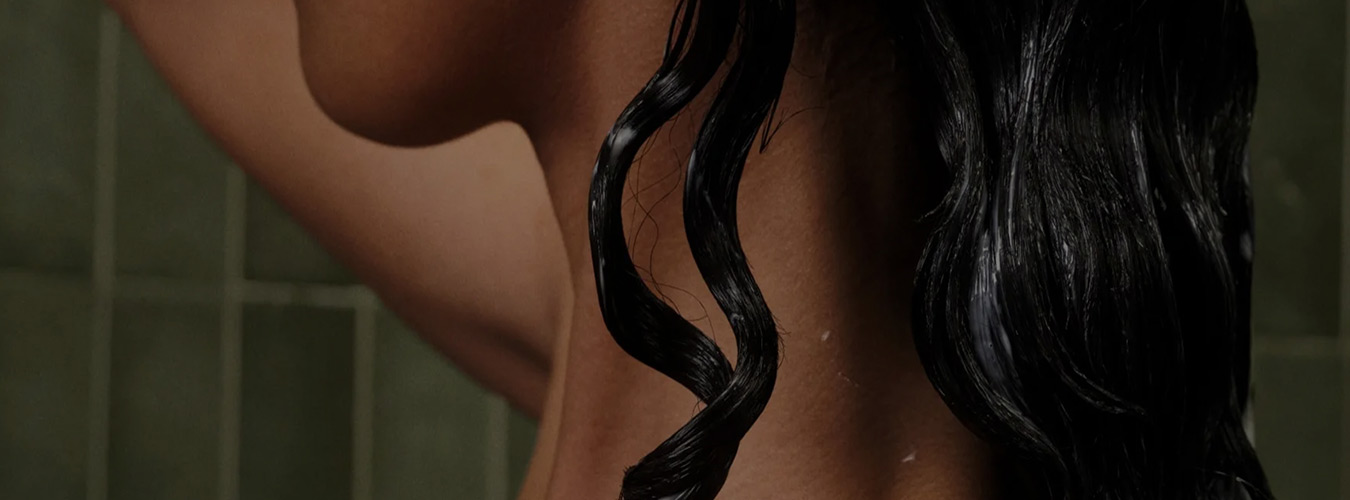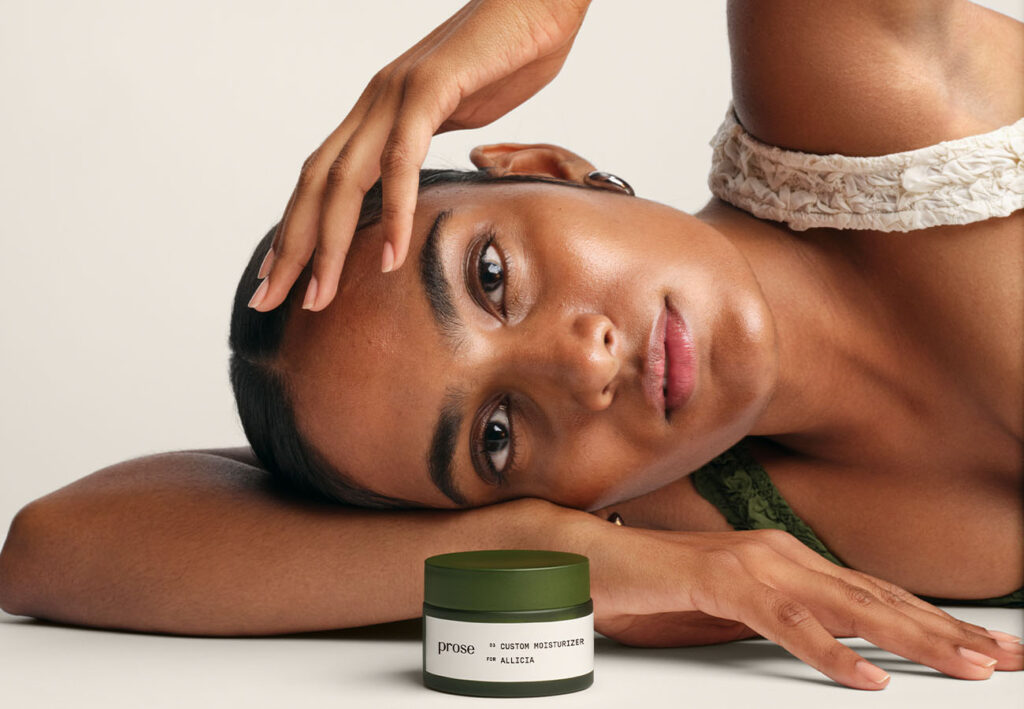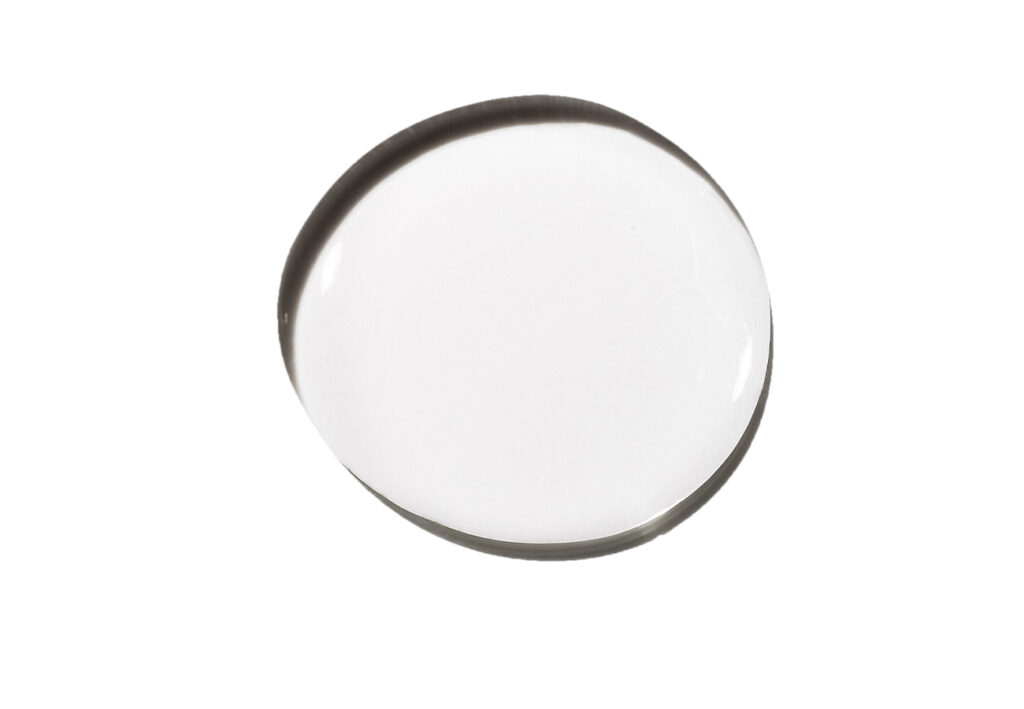The Different Types of Acne, and What Causes Each
First and foremost, it helps to understand the different “severities” of breakouts. On the low end, there are “comedones”, which are blackheads and whiteheads. Next is “inflammatory acne” which are tender to the touch and can also originate as comedones. Don’t push on these papules and pustules, no matter how poppable they appear, as you risk deep-tissue damage due to their inflammation. The most severe breakouts are called “nodular”, which can manifest as nodules or cysts; these are the ones that feel tender to the touch, are deeply embedded beneath the skin, and can swell to large sizes.
More on the most common culprits behind each of these types of acne below, with Crumm’s insights. This may help you understand the root of your own breakouts, if they haven’t already been diagnosed.

Comedones
Blackheads: Those pesky little darkened heads call attention to your pores, and can pop up in large patches, no less. Crumm cites excess oil production as the key contributing factor. “Overactive sebaceous glands can lead to the accumulation of oil, contributing to blackhead formation,” he says. But improper cleansing is a close second. “Not cleansing the skin properly or regularly can lead to a buildup of dead skin cells and oil, clogging pores,” says Crumm. He suggests taking audit of your skincare or makeup products, too, to ensure that their ingredients don’t clog pores or aggravate blackheads. You might need to search the web for their “comedogenic rating”, if so. Otherwise, stick with products that promise to be non-comedogenic.
Whiteheads: Are you possibly experiencing a fluctuations in hormones? Because that’s a key factor behind whiteheads, says Crumm. Puberty, menstruation, certain medications, and even stress can all increase oil production, which can then clog up inside pores and lead to whiteheads, he explains. And while blackheads often result from improper cleansing, whiteheads might sprout up due to inadequate or irregular exfoliation, Crumm says. “The accumulation of dead skin cells, along with oil, can clog pores.” Lastly, just like hormones can play a role, genetics also determine one’s skin type and susceptibility to acne, Crumm adds. “This includes the development of whiteheads.” A predisposition just means that you need to build your skincare regimen around products that mitigate acne formation. (More on that below.)
Inflammatory Acne
Papules: “Papules are often a result of inflammatory responses in the skin, which can be triggered by irritants, allergies, or bacterial overgrowth,” says Crumm. Use acne products that target this bacteria in particular. Similarly, bad habits can be behind these inflamed blemishes: “Overwashing, scrubbing too hard, or using harsh skincare products can damage the skin barrier and lead to inflammation and papules.” And don’t be shocked at this news, but hormonal changes can also contribute to papules, which often start out as whiteheads in the first place.
Pustules: Like papules, pustules can originate with bacterial buildup in the pores, but so can a diet high in inflammatory foods, says Crumm. “Diets high in sugar and dairy have been linked to increased inflammation, potentially contributing to the development of pustules.” If you’ve ever noticed an increase in pustules during seasonal shifts or particular calendar months, then it’s not just you: “Environmental factors like humidity and urban pollution can aggravate the skin and induce pustules,” Crumm explains.
Nodular Acne
Nodules and Cysts: These aren’t one in the same, but their origins can often be traced to similar factors. (As for their key difference, nodules have more solid mass, while cysts are filled with pus.) Both can be triggered by hormonal changes, “especially those related to androgens [testosterone and estrogen],” says Crumm. And thus, anything that spikes your stress levels (which can yield a hormone flux) can also induce nodules and cysts, he adds. Here’s some stress-inducing information for those of us who do experience this severe form of acne: It’s often predisposed by our genetics, says Crumm. So, you and your friend might experience the same stressful situation, but you end up with the painful blemishes across your face, and s/he gets off without so much as a whitehead. C’est la vie.
The Best Ingredients for Preventing Breakouts
If you have a predisposition to any type of acne, or you anticipate a scenario where you might experience any kind of breakout, you can use targeted skincare ingredients to prevent (and treat) each type.
The Best Ingredients for Comedones
Here are Crumm’s favorite ingredients to help prevent and target comedones (blackheads and whiteheads).
Salicylic Acid: “It is oil-soluble, so it can penetrate [past skin’s lipid layer] into pores to dissolve sebum and dead skin cells,” says Crumm.
Benzoyl Peroxide: This is effective in killing acne-causing bacteria, even in more inflammatory cases, he explains. (Be careful, as topical benzoyl products can bleach your towels and pillowcases.)
Glycolic Acid: “This exfoliates the surface of the skin, helping to clear dead skin cells that can clog pores and lead to acne,” Crumm says.
The Best Ingredients for Inflammatory Acne
And here are Crumm’s top recommendations for ingredients that prevent and treat more severe cases of acne—the inflammatory blemishes like papules, pustiles, nodules, and cysts.
Tretinoin: This prescription-grade retinoid is a Vitamin A derivative that accelerates skin cell turnover, says Crumm. (Be warned, it may cause skin purging at the start.) “It also helps in unclogging pores, and has anti-inflammatory properties.” All retinoids produce their best results after about 90 days, though.
Salicylic Acid: Similar to its benefits for comedones, salicylic acid can prevent inflammatory cases which might otherwise start out as whiteheads.
Always made to order. Never made to waste.
Exclusive Trial Offer Get 60% Off + Free Gift

Prose products are not intended to treat acne but might be personalized to help reduce the appearance of breakouts.






